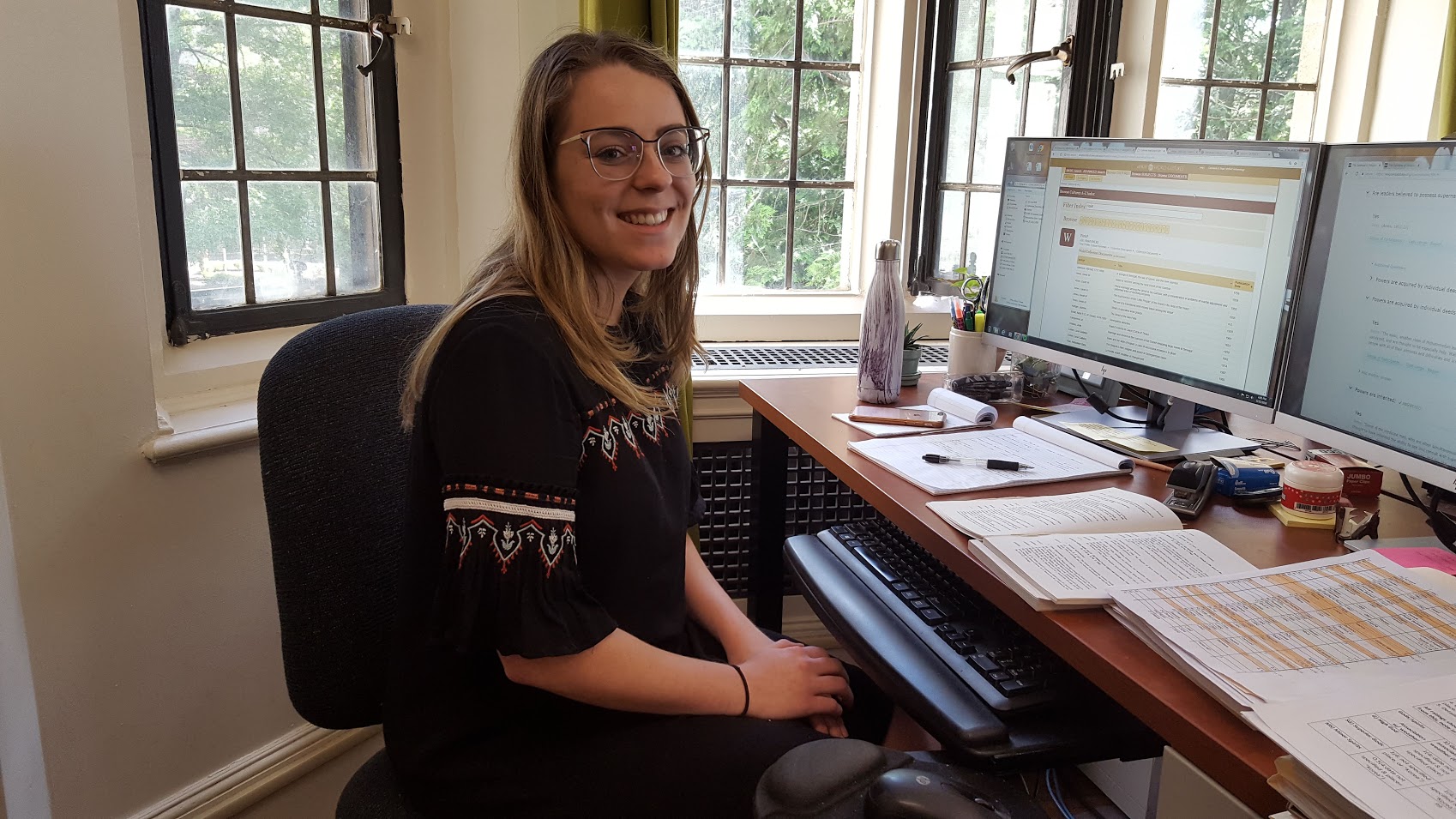This summer, after a year as our Melvin Ember Intern, Emily has taken on a new role as a grant-supported HRAF researcher. This past year, HRAF was asked to collaborate on an exciting digital humanities project housed at the University of British Columbia in Vancouver–the Database of Religious History (DRH). This work is supported by the John Templeton Foundation. The Database of Religious History’s goal is to create a standardized, searchable, and visualizable knowledge database about world religions (past and present) complete with expert commentary and primary-source citations.
Emily uses eHRAF materials to create historical religious “profiles” for the societies of the Standard Cross-Cultural Sample. Digging through in-depth ethnographies, Emily mines the information in eHRAF World Cultures to answer questions about religious diversity in societies across the world—including: is a spirit-body distinction present in this society? and do supernatural beings care about property crimes in this community? Examining the Trobriand Islanders circa 1890-1930, Emily sought ethnographic data to answer over 80 questions, drawing from eHRAF’s uniquely powerful search function, which allows her to search through hundreds of thousands of pages of ethnographic texts that have been hand-indexed according to cultural subjects (e.g. funerary practices–OCM identifier 746, and luck–OCM identifier 777), at the paragraph level.

Above, a screenshot from the Database of Religious History’s profile for the Trobriand Islanders. Click here for a navigable list of all Emily’s work on the Database of Religious History website.
Psychology & Religion
Emily hopes to pursue a career in cross-cultural psychology, and is using her experience at HRAF and with the DRH to better explore how culture affects experiences and perceptions of mental illness—given that religion often plays an important role in disease etiologies. Particularly intriguing to her are explanations of mental instability that point to the actions of supernatural beings. For example, searching for Ticuna religion in eHRAF World Cultures led her to a 1948 work by Nimuendajú:
“The Tucuna maintain moiety exogamy with strict inflexibility, and in 1941 still punished violations with death. They regard incest as a sin against the goddess Taé, who punishes it by making one insane during his life and by annihilating his soul after his death.” (Nimuendajú 1948)
Reading about diverse cultural approaches to mental illness is preparing Emily to help her future patients. Emily’s plan is to attend graduate school for clinical psychology with a focus in cross-cultural psychology. She hopes to create relevant treatment plans for people from other cultures. Her dream research project is an ethnography of psychological illness, performed as a collaboration between anthropologists and psychologists. And her must-haves in a graduate school? Great anthropology and psychology departments that allow her to work within both fields simultaneously.
Reflections on her time as a Melvin Ember Intern
As a Melvin Ember Intern, Emily did statistical analyses for a research project on the cross-cultural drivers of cooperation (i.e., whether cooperation is more strongly related to resource stress or to religion). During this time, she coauthored a paper, “The gods must be angry: Bad weather, supernatural punishment, and cooperative behavior” with Ian Skoggard, Carol Ember, and Christina Carulos (currently under review). Emily was excited to be a valuable part of the HRAF research team, and says she relished the chance to apply her statistical training in a real research project.
Over her time at HRAF, Emily honed her synthesis and analysis skills and broadened her knowledge base by evaluating and summarizing cross-cultural articles for our open-access database of cross-cultural findings, Explaining Human Culture.
To learn more about Emily’s work, or to stay in touch with ongoing research at HRAF, sign up for HRAF News, our monthly newsletter.
Works Cited
Malinowski, Bronislaw. 1916. “Baloma: The Spirits Of The Dead In The Trobriand Islands.” Journal Of The Royal Anthropological Institute Of Great Britian And Ireland 46: 353–430. http://ehrafworldcultures.yale.edu/document?id=ol06-006.
Nimuendajú, Curt. 1948. “Tucuna: Habitat, History, And Language.” Bulletin. Washington: Smithsonian Institution. http://ehrafworldcultures.yale.edu/document?id=sq20-002.
